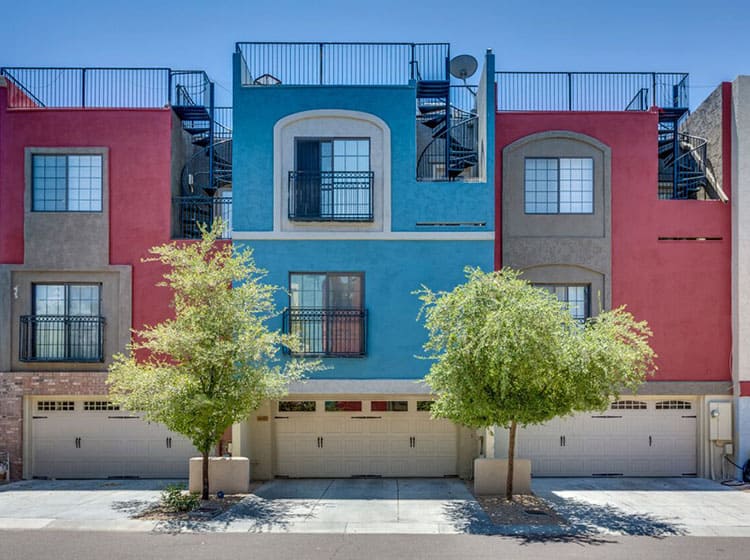Step-By-Step Guide To Readying Your Wall Surfaces For Repainting
Step-By-Step Guide To Readying Your Wall Surfaces For Repainting
Blog Article
Author-Sander Zachariassen
When you're prepping your wall surfaces for paint, it's critical to follow a systematic process to make sure a remarkable surface. Beginning by checking out the wall for any kind of damage; this action can make or break your job. As soon as you've identified any kind of issues, cleaning up the surface area effectively is necessary, as a filthy wall surface can affect paint adhesion. Afterwards, you'll need to spot any blemishes and use a primer. However there specify methods and tips that can boost your preparation video game-- allow's check out those additional to attain the best outcomes.
Assessing Wall Problem
Before you order your paintbrush, take a minute to assess your walls' condition. Check for any type of visible damage like fractures, openings, or peeling paint. These imperfections can influence just how the paint adheres and looks as soon as it's completely dry. If you discover any substantial damages, you'll need to focus on fixings before diving right into paint.
Look very closely at the appearance of your wall surfaces. Is the surface smooth, or is there structure that might call for special factor to consider? Smooth wall surfaces typically call for much less prep, while distinctive surfaces might require even more time to paint uniformly.
Also, take into consideration the previous paint job. If the old paint is shiny, it mightn't permit new paint to stick correctly. You'll would like to know if your wall surfaces have actually been repainted with oil-based or water-based paint, as this can affect your choice of guide or paint.
Ultimately, take note of any type of moisture concerns. If you see signs of water damage or mold and mildew, address these troubles instantly to stop additional problems.
Cleaning the Surface
Once you have actually analyzed the condition of your walls, the following action is cleaning the surface. Beginning by gathering your products: a pail, cozy water, a mild detergent, a sponge or fabric, and a scrub brush for tougher spots.
Begin at the top edge of the wall and work your method down. Mix the cleaning agent with warm water in your bucket, then dip the sponge or cloth into the option. Wring it out to stay clear of too much dampness on the wall surfaces.
As you clean up, pay attention to locations that may've collected dust, grease, or finger prints. For stubborn stains, utilize the scrub brush delicately to avoid harming the paint under. Rinse your sponge or fabric often in tidy water to stop spreading dust around.
After cleansing, it's necessary to clean the walls with a damp towel to eliminate any soap deposit. This step guarantees a smooth surface for the new paint to adhere to.
Permit the walls to completely dry totally before moving on to the next prep work actions. This thorough cleansing process will help develop a fresh canvas for your paint project, ensuring the most effective results.
Patching and Priming
Patching and priming are critical action in preparing your wall surfaces for a fresh layer of paint. First, examine your wall surfaces for any kind of openings, splits, or blemishes. Use a premium spackling compound or patching paste to load these locations.
Use the compound with a putty knife, smoothing it out so it's flush with the surrounding surface area. Permit it to dry totally, and after that sand it gently till it's smooth and even.
Once you have actually patched whatever, it's time to prime. Primer aids secure the patched locations, ensuring the paint sticks correctly and provides a consistent finish. Select a primer ideal for your wall surface type and the paint you'll be making use of.
Use the guide making use of a roller for bigger areas and a brush for edges and edges. If your patched areas are considerably large or porous, you might wish to apply a 2nd layer of guide after the very first one dries out.
After priming, allowed everything completely dry thoroughly before carrying on to paint. This prep work won't only improve the appearance of your wall surfaces but additionally extend the life of your paint job.
Take your time, and you'll be pleased with the outcomes.
Verdict
By following these simple actions, you can attain a smooth and expert finish on your walls. Beginning by examining their condition, after that clean and patch any blemishes before applying primer. Keep in Go At this site to enable appropriate drying out time and ensure every little thing is smooth before you dive into paint. With the right prep work, you'll establish the stage for a gorgeous change in your room. Now, collect your materials, inhale the fresh air, and get ready to repaint!
